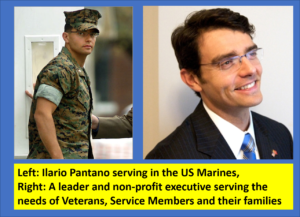
Isolation, loneliness and rejection often contribute to people attempting suicide. (Photo courtesy of boksburgadvertise.co.za
As a future clinical social worker and mental health professional, I often read various data on suicide. I think it would be fair to say most people know that suicide is a national public health issue in the United States. However it is likely possible there are certain facts that people may not be aware of about suicide in our country.
Suicide is indeed a social issue that affects everybody and can result from severe depression. Depression faces negative stigma from society at times and can be hard to treat. I recently found out that a fellow classmate from high school had died by suicide. The overall realization that somebody as young as myself would ponder that life wasn’t worth living anymore is disheartening. Therefore my goal is to raise awareness and possible inform people about things they may have not know about suicide.
1. Veterans are at higher risk of suicide then those who did not serve. Veterans are twice as likely as civilians to die by suicide, according to the Veteran Affairs. Veterans make up more than 14 percent of all suicides, although they account for only 8 percent of the total population. I recently attended the 2018 NASW (National Association of Social Workers) national conference in Washington D.C. where I discussed the problems of suicide within our veteran populations. I was then informed that more veterans are killed by suicide then in active combat. The mental health of our veterans needs improvement!
2. Firearms account for more than half of suicides in the United States. I am by far not making an argument that we need tougher gun control in our country. That is a political discussion for another day. However it is important to note that firearms contribute to more than half of the suicides in the United States. There are a lot of responsible gun owners who lock up their firearms responsibility, but we need to remain open to hear any possible solutions to this specific problem.
3. Men are at higher risk of death by suicide then women. Men die by suicide 3.53 times more often than women. This fact can be attributed to many various factors. However it is important to realize that women aren’t the only ones who need help. There is often a negative stigma men face for receiving help for feeling depressed. Therefore if you are or know a man who is feeling depressed, don’t wait to get or get them help.
4. The LGBT community is at higher risks of suicide. Various psychological and sociological studies have indicated that lesbian, gay, bisexual, and transgender populations are at increased risks for suicide. The higher prevalence of suicide can be linked to higher incidence of mental disorders in these populations—in particular, depression, anxiety, and substance abuse. And much of this is caused by negative oppression from the family, the church and society as a whole.
5. Suicide is the second leading cause of death for college students. As a college student myself, this fact is disheartening. The only thing that lead to more deaths of college students is vehicle related deaths. Suicide is a major issue for our college youth and can stem from various things. This is why it is important to have counseling resources on campus for all students.
I may expand on some of these five areas in future blogs. For now, here is the national suicide lifeline if anybody needs it. https://suicidepreventionlifeline.org/ 1-800-273-8255
* * * * *



